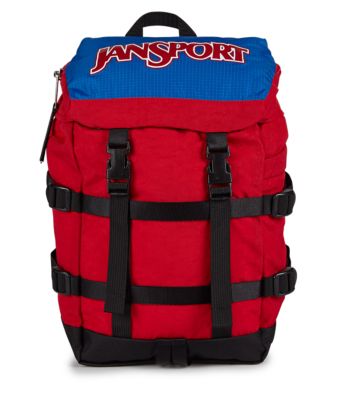
Frontenis: A Comprehensive Dive into the Unique Sport
Frontenis is an exciting racket sport that blends skill, speed, and strategy. It captivates players and spectators worldwide. With a rich history and growing global reach, it has evolved into a beloved sport for amateurs and professionals alike. Its significance extends beyond recreation, influencing communities socially and politically. This blog explores Frontenis in detail, covering its origins, popularity, gameplay, professional leagues, and rules. If you’re curious about this dynamic sport, let’s dive in.
The Origin and History of Frontenis
Frontenis originated in Mexico during the early 20th century. It emerged as an adaptation of Basque pelota, a traditional handball sport played against a wall. Spanish immigrants brought pelota to Latin America, where it became popular in Mexico. Players added tennis rackets and rubber balls to the game, creating a faster, more exciting version called Frontenis.
The sport grew rapidly in the 1920s and 1930s, gaining popularity in Mexican cities. The combination of agility, precision, and strategy appealed to athletes and spectators. Over time, Frontenis evolved with standardized rules and equipment. The International Fronton Federation (IFF) established regulations, promoting the sport on a global stage.
During the mid-20th century, Frontenis spread to Europe, especially Spain and France. It became a cultural link between Mexican and Spanish-speaking communities. Today, the sport continues to grow, showcasing its rich history and adaptability.
Global Popularity and Where Frontenis Is Played
Frontenis enjoys widespread popularity, particularly in Spanish-speaking countries. Mexico remains the sport’s stronghold, with thousands of players and numerous dedicated courts. The sport is also prominent in Spain, where it forms part of the broader pelota tradition. Frontenis tournaments are frequently held, attracting top talent and enthusiastic fans.
In recent decades, Frontenis has gained traction in Latin America, including countries like Argentina, Colombia, and Venezuela. Each region brings unique styles and techniques, adding to the sport’s diversity.
Beyond Spanish-speaking regions, Frontenis has reached other parts of the world, including the United States and France. Immigrant communities and cultural exchanges have introduced it to new audiences. Although less widespread in Asia and Africa, the sport is slowly gaining interest through international events.
Countries like Italy and the Czech Republic have also embraced it, hosting clubs and competitions. Its global appeal lies in its accessibility and dynamic gameplay, making it attractive to all ages.
Amateur Frontenis: A Global Perspective
Amateur Frontenis serves as the foundation of the sport. Schools, community centers, and recreational clubs play a pivotal role in its development. Youth programs and training camps introduce children to the basics, ensuring the sport’s longevity.
In Mexico, Frontenis is deeply embedded in school curriculums and youth leagues. Children learn the fundamentals through structured programs. Coaches emphasize agility, hand-eye coordination, and teamwork. Regional tournaments foster healthy competition, inspiring young athletes to pursue the sport.
Spain boasts similar initiatives, integrating Frontenis into local clubs and schools. Many municipalities support the sport by providing facilities and funding. Parents often encourage their children to participate, viewing it as a fun and educational activity.
In other parts of the world, amateur Frontenis thrives in immigrant communities. For example, in the United States, Hispanic neighborhoods host friendly matches and small leagues. These games often blend traditional Frontenis with cultural celebrations, creating a unique experience.
Efforts to promote Frontenis in schools and youth organizations are ongoing. Coaches and enthusiasts work tirelessly to expand access and resources. By nurturing young talent, they ensure the sport’s growth and sustainability.
Professional Leagues and Competitions
The professional Frontenis scene is vibrant and competitive. It showcases the best players from around the world, elevating the sport to new heights. Professional leagues and tournaments draw large audiences and significant media attention.
In Mexico, the Liga Nacional de Frontenis (National Frontenis League) represents the pinnacle of professional play. Elite athletes compete in high-stakes matches, demonstrating remarkable skill and strategy. Matches are often televised, bringing the excitement to fans nationwide.
Spain also boasts a strong professional circuit. The Spanish Frontenis Federation organizes national championships and international events. Spanish players frequently excel in global tournaments, solidifying their reputation as top competitors.
The World Fronton Championships, organized by the International Fronton Federation, is the premier international event. Held every four years, it attracts teams from across the globe. Players compete in various pelota disciplines, with Frontenis being a highlight.
In addition to these major events, regional leagues and tournaments provide platforms for emerging talent. Countries like France, Venezuela, and Italy host competitive circuits, fostering local and international rivalries.
Professional Frontenis not only entertains but also inspires. Aspiring players look up to their idols, striving to emulate their success. The sport’s growing professionalism signals a bright future.
Political and Social Significance
It holds profound political and social significance, especially in its countries of origin. It serves as a cultural bridge, uniting diverse communities through a shared passion.
In Mexico, Frontenis symbolizes national pride and heritage. It is celebrated as a homegrown sport that reflects the country’s creativity and innovation. Local tournaments and festivals often include Frontenis matches, strengthening community bonds.
In Spain, the sport connects regions with a shared Basque pelota tradition. It fosters unity among Spanish-speaking countries, promoting cultural exchange. The sport’s adaptability allows it to bridge generational gaps, bringing families together.
Socially, Frontenis encourages inclusivity and teamwork. It provides opportunities for individuals from different backgrounds to connect and collaborate. In many cases, it serves as a tool for youth development, teaching discipline, perseverance, and sportsmanship.
Politically, Frontenis has been used to strengthen diplomatic ties. International tournaments often include cultural events, fostering goodwill among participating nations. The sport’s growth reflects a broader trend of global interconnectedness.
Rules of Frontenis
The rules of Frontenis are straightforward yet require strategic thinking and precision. Matches are played on a fronton court, consisting of a front wall, side walls, and a floor. Players use rackets to hit a rubber ball against the front wall.
A typical match involves two teams of two players each. The objective is to score points by outmaneuvering opponents. Points are earned when the opposing team fails to return the ball correctly.
The game begins with a serve. The server must hit the ball against the front wall, ensuring it lands within the designated area. Once the ball is in play, teams alternate hitting it, keeping it in motion.
The ball must always hit the front wall before bouncing on the floor. Players can use the side walls to create angles and outwit opponents. A rally continues until one team commits a fault.
Faults occur when the ball:
- Misses the front wall.
- Lands outside the court boundaries.
- Is hit out of sequence.
Matches are typically played to a set number of points, often 20 or 30, depending on the competition. Tie-breakers may be used to determine the winner in closely contested matches.
Advanced strategies involve controlling the pace and positioning. Players often employ feints, lobs, and power shots to gain an advantage. Effective communication and coordination between teammates are essential for success.
The Future of Frontenis
Frontenis continues to grow, attracting new players and fans worldwide. Its dynamic nature and cultural significance make it a unique and enduring sport. Efforts to promote it globally, especially among youth, are bearing fruit.
The sport’s inclusion in international multi-sport events could further enhance its profile. Increased media coverage and sponsorships will likely boost its popularity. With a strong foundation and a passionate community, Frontenis is poised for a bright future.
In conclusion, Frontenis stands as a testament to the power of sport to unite and inspire. Its rich history, global reach, and vibrant community make it a sport worth celebrating. Whether you’re a seasoned player or a curious newcomer, Frontenis offers something for everyone.





